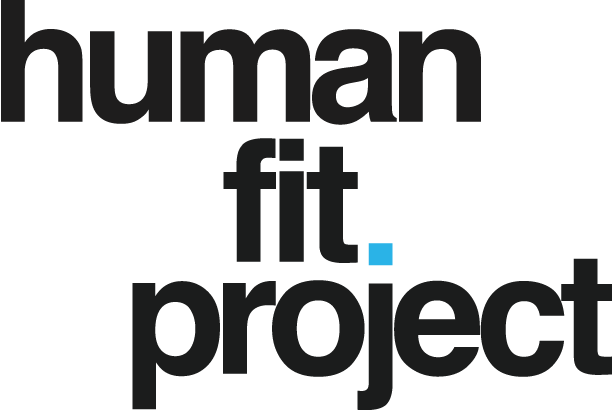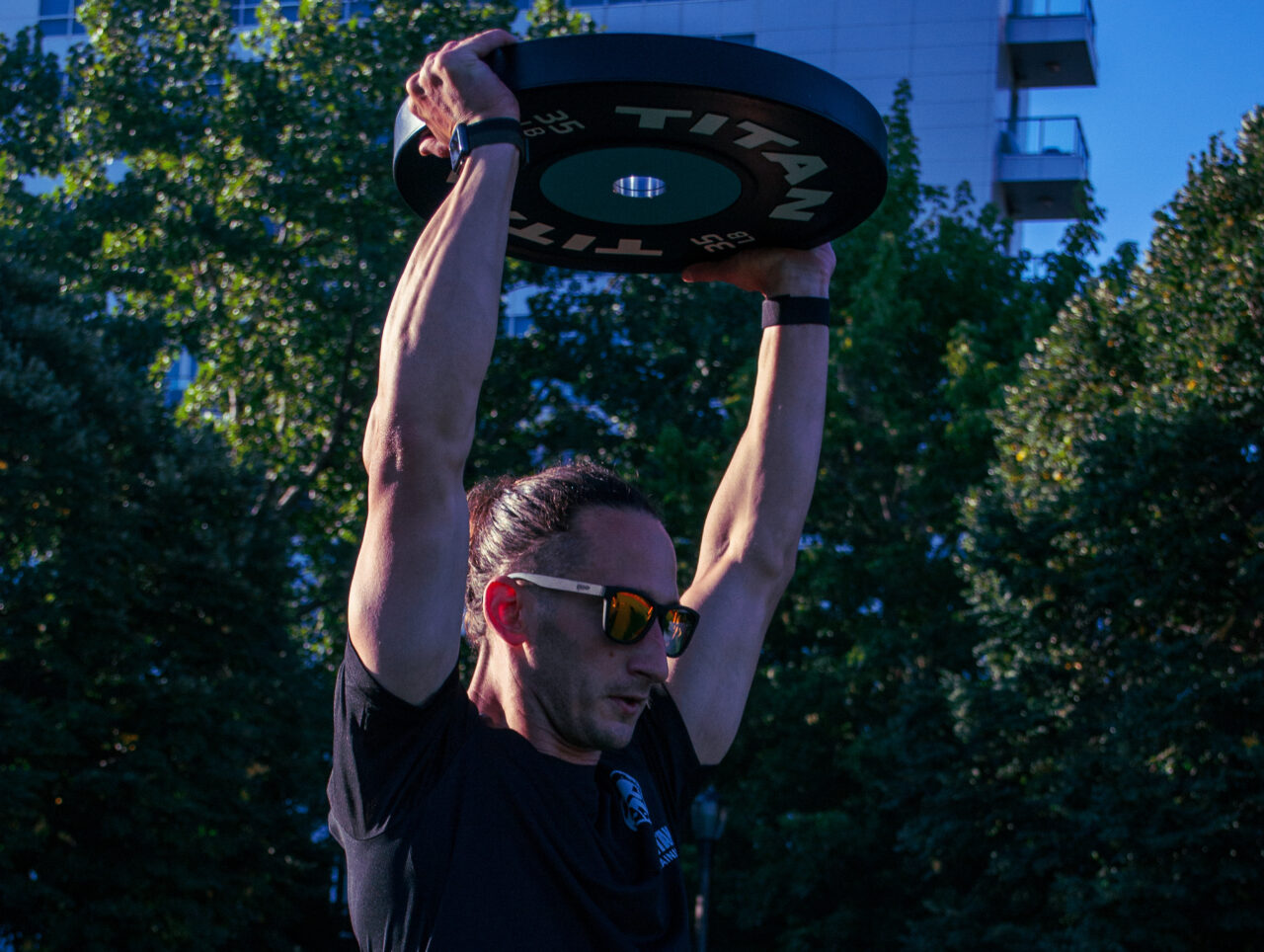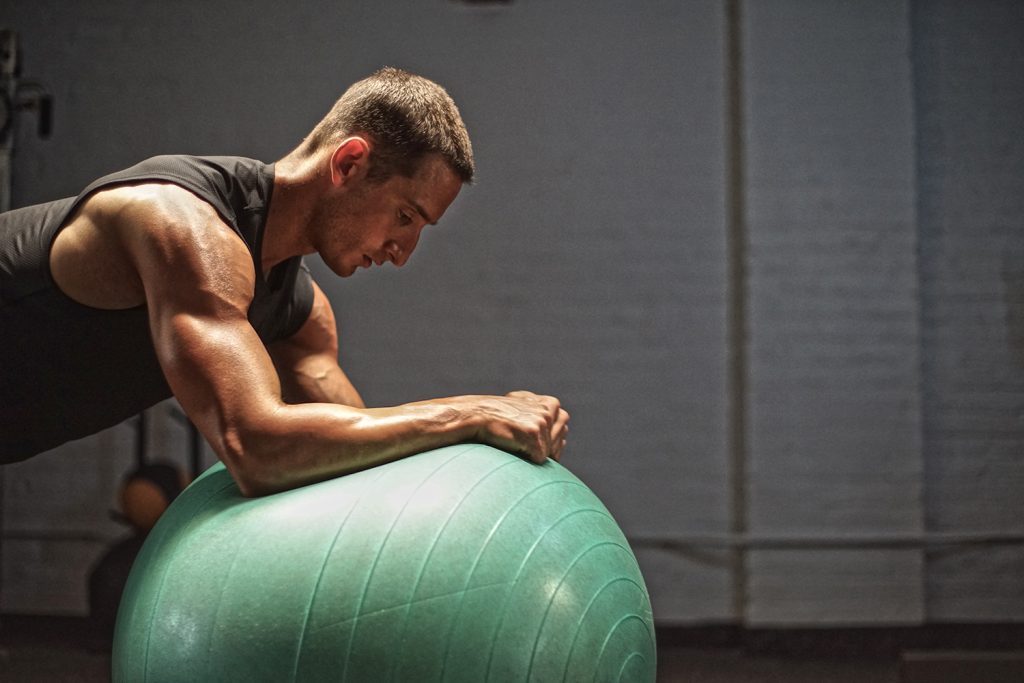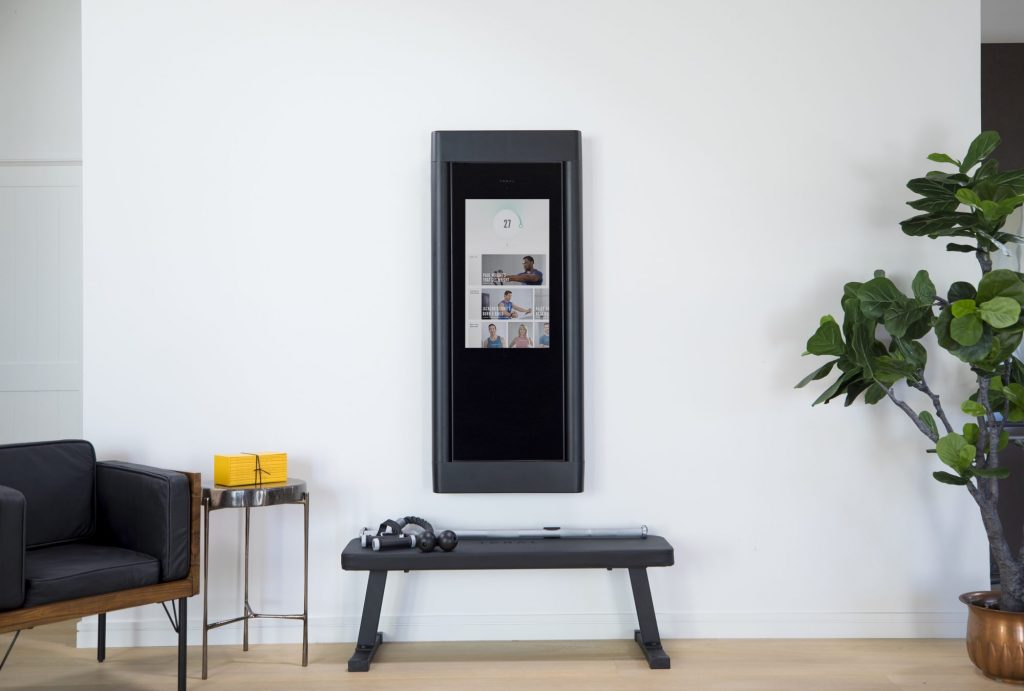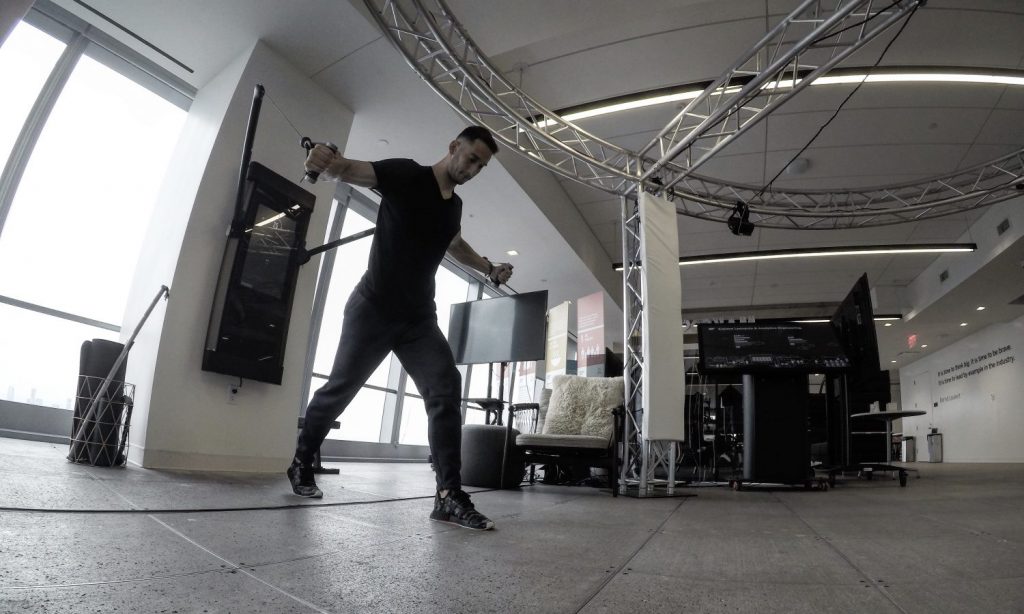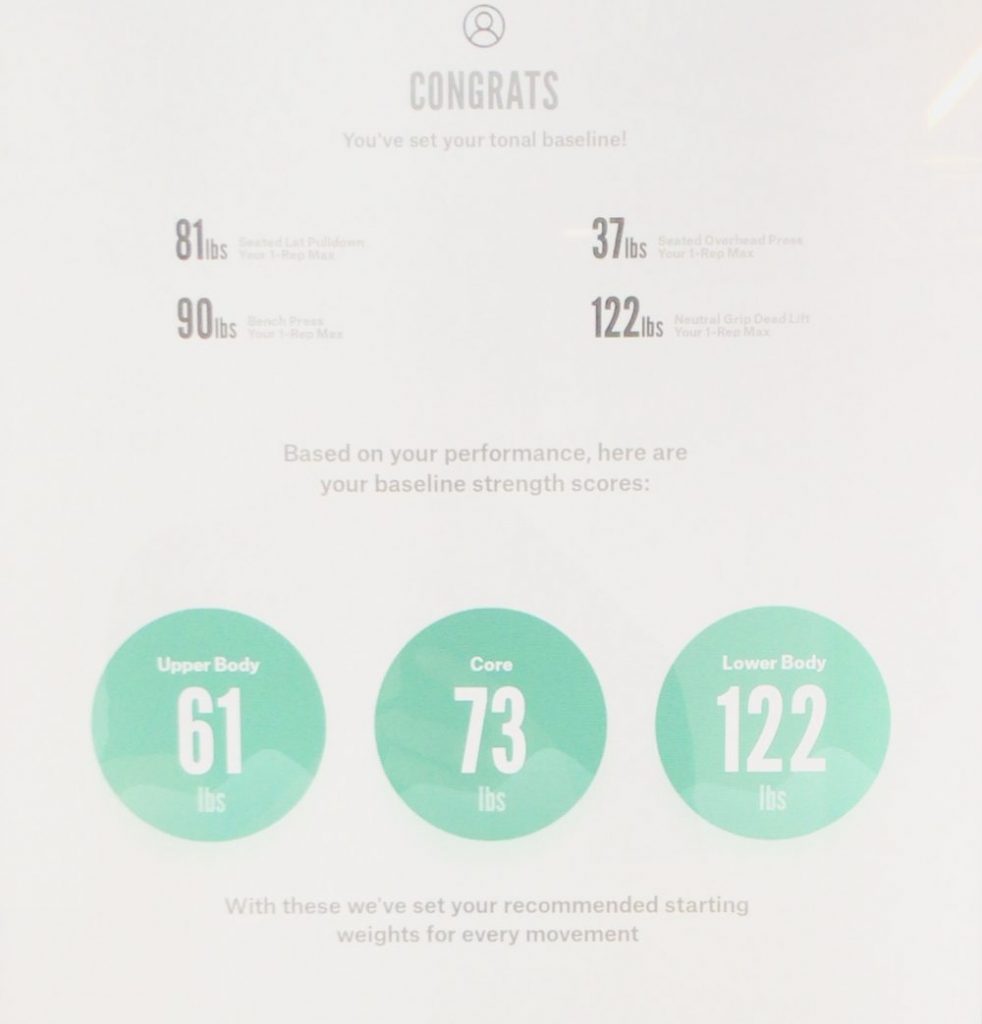So, whether you enjoy sweating where you sleep or not, here’s our take on the at-home essentials and the non-essentials, but nice-to-haves. We’ve also included a basic at-home training plan below.
You may also like: The 2-dumbbell workout plan and the 10 best bodyweight-only workouts
The At-Home Equipment You Need
Dumbbells
It’s good to be able to squat, row, press, etc. with a bit of resistance, even if it’s not a lot. A pair of 15s or 20s should do for most. While more weight like 30s, 40s, and 50s might be great for deadlifts and squats, it might be tougher for moves like side laterals raises, renegade rows, curls, etc. Still too light you say? Do speed reps, or better yet, do super slow reps. You can pick these up anywhere from Amazon, Target, Walmart, Dick’s Sporting Goods, etc.
Pull-up bar
The pull-up is one of the best exercises for our body. You can do loads of variations like chin-ups, static holds, and around-the-worlds, just to name a few. All you need is a doorway and you’re set. Get the bar. Added plus: you can do hanging knee raises or leg lifts which are one of the most effective moves for your abs. We like this Multi-Grip Lite Pull-Up Bar by ProSource.
Resistance bands
This isn’t just an at-home essential, but a travel essential. We like to pack this anywhere we go for an easy way to do a variety of exercises. They provide a different type of resistance than you get with dumbbells. These come in a variety of different strengths. Similarly to the dumbbells, we suggest leaning towards lighter. We like Professional Latex Resistance Tubing by TheraBand.
Foam roller
You can’t just make your muscles work all the time, you’ve got to give them love too, even if it’s a little tough sometimes. The point of foam rolling isn’t to beat the muscle up and feel pain, it’s to loosen up scar tissue and assist the healing process. This is something you can easily do at anytime at home, especially during down time. We suggest staying away from the softer alternatives out there—they can be a bit weaker and they’re not as durable. You’re better off going with the harder versions and ease into the rolls. We like either the basic GRID Foam Roller or GRID Vibe which is a vibrating roller for enhanced muscle relaxation by Trigger Point.
Massage ball
While the foam roller will hit all the big stuff, to get into those little spots a massage ball aka a lacrosse, tennis, or golf ball is a must-have. Going with the lacrosse ball is the best bet. Tennis balls can be a bit too soft and the golf ball is a bit too small. A few spots we love working are the piriformis (pretty much your upper glute, Google it), the hip socket, and around the rear delts and shoulder blades. You can get that lacrosse ball pretty much anywhere.
Note: we put in anywhere from 20-40 minutes per day with the foam roller and massage ball, typically after a workout or before bed.
Stability ball
While it does take up a little bit of space, it’s a versatile piece of equipment you can do several exercises and exercise variations on. It makes a great alternative to an office desk chair and it’s one of those things you can do little exercises with while watching TV. You can also pick these up anywhere from Amazon, Target, Walmart, Dick’s Sporting Goods, etc.
Yoga mat
Keep your carpet clean or save your butt bone, elbows, and knees if you’ve got tile or hardwood floor. A yoga mat is a must have for ground-based exercises, post-workout stretching, full-blown yoga sessions, or just laying on your back for a few minutes to chill and decompress. We like PRO yoga mat by Manduka or if you’re more into the idea of a yoga rug, we like the Cotton Yoga Rug by Hugger Mugger.
Non-essentials, but nice to have
Medicine Ball
This was close to being a bare essential. You can toss it, slam it, chop it, and do a bunch of ground-based exercises. We love a good medicine ball, but maybe it’s better for the gym where you can do all the fun stuff with it. Medicine ball beats drywall any day. But if you want one at home, we won’t fight you on it. We like this simple Medicine Ball by AmazonBasics.
Foam Roller
Sometimes you don’t want to foam roll on the floor or the lacrosse ball doesn’t seem to hit the spot; this is where a handheld roller can come in… handy. For us, we’ve found that it’s a nice piece to really get in with more control, detail, and effort on areas like the outer and inner regions of the quads, just above the knee. Other hotspots like the calves are along the sides of the shin are good to get with a handheld. We like GRID STK X by Trigger Point.
Mini Bands
These would have made the bare essentials list, but you can do a lot of the basics with the resistance bands/tubing mentioned above. Mini bands could arguably be for a bit more specialized training. If you’re into them, we like the Multi-Resistance Training Band Set by SKLZ. Stay tuned for an upcoming piece on our favorite uses.
Jump Rope
For all you Rocky, Creed, or Southpaw-inspired out there, get a jump rope. If you’re not a fan of running, cardio machines, or have got bum knees and have a tough time with high-intensity exercises, this might be your perfect solution. If you’re just starting out, get a beaded or licorice one. Grab the speed ropes if you’re thinking you want to get competitive. We like the Heavy Beaded Workout Rope for basic training or the SURGE Double Under Speed Rope by ELITE SRS for competitors.
Adjustable Dumbbells
If we had the space (and budget) to have an entire gym in our places, we would. Odds are, you would too. One of the best things to have would be different dumbbells. While it’s not a bare essential to have adjustable dumbbells, it would be a nice to have. Out of the manufacturers to produce them, we like PowerBlock because you have a lot of different resistance sets you can chose from. But we also like SelectTech 552 Dumbbells by Bowflex for their cleaner design.
Today’s Trendy Cardio Machines
Just like anything else, when it comes to cardio training we’re all different. High-intensity interval training, running, cycling, or rowing—just take your pick. Rowing has gotten much more popular over the years, if you’re into that idea go with the Model D by Concept2 or if you’re looking for something with an eye-pleasing design, check out the Natural Rowing Machine by WaterRower. If you’re going the cycling route, there’s no doubt on this one: check out Peloton.
Final words
It’s very easy to dog it through an at home workout. Distractions like our laptops and TVs, comfortable chairs, couches, and blankets can get ya. If you’re legitimately going to get a session in at-home make sure you’ve got a clearly defined space, put your phone in airplane mode, and be aware of how focused (or not focused) you are.
An easy-to-follow 3-day routine
Monday
Squat Punch x 10
Frog Jump/Tuck x 10
Band Curl x 10
Mountain Climber x 10
Close-Grip Push Up x 10
Rest as needed. Complete 4-6 rounds
Wednesday
Renegade Row x 10
Squat+Curl+Press x 10
Overhead Lunge x 10
Mountain Climber x 20
Rest as needed. Complete 4-6 rounds
Friday
Dumbbell Flye x 10
Reverse Flye x 10
Two-arm Hammer Curl x 10
Dumbbell Push Up x 10
Rest as needed. Complete 4-6 rounds
Finisher/Extra Cardio
* Use this on days off or complete a couple rounds after the main workout for the day.
Jumping Jacks x 20 seconds
Mountain Climber x 20 seconds
Plank Shoulder Taps x 20 seconds
Rest as needed. Repeat as you see fit.
